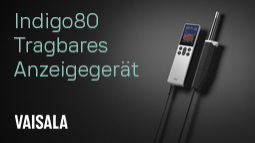Off to short wavelengths
State of the art and trends of UV light-emitting diodes
Ferdinand-Braun-Institut presents its UV LED developments in talks and at the ac-companying exhibition at ICULTA-2018 – from chips to ready-to-use modules. The in-stitute co-organizes the international conference hosted in Berlin.
It is all about light-emitting diodes (LEDs) at ICULTA-2018 – International Conference on UV LED Technologies & Applications 2018. The focus of the international expert meeting, held from April 22 to 25, 2018 in Berlin, is on the ultraviolet (UV) spectral range and thus at wave-lengths below 400 nm. Talks deal with progress in manufacturing technologies, current de-velopments, applications and trends related to UV LEDs. The Ferdinand-Braun-Institut (FBH) and its spin-off UVphotonics NT GmbH are represented with several (invited) talks and booths at the accompanying exhibition, respectively.
Progress in development makes UV LEDs attractive for industrial applications
Increased efficiency and output powers make UV LEDs more and more attractive for a con-stantly growing number of applications. Unlike mercury vapor lamps, UV LEDs consist of non-toxic substances, and their wavelengths can be flexibly adjusted over a wide spectral range. Moreover, their small size enables various configurations of UV radiation systems. UV LEDs can be quickly switched and dimmed, and heat losses are efficiently dissipated via heat sinks. It is therefore to be expected that environmentally friendly light-emitting diodes will increasingly replace conventional UV light sources and open up novel applications. Their fields of use are manifold: UV radiation can be used, amongst others, to disinfect water, air and surfaces, to detect pathogenic germs, as well as for curing of synthetic materials.
Scientists from the FBH and its spin-off UVphotonics report in their talks on progress achieved regarding UV LED efficiency and reliability. They identified, amongst others, a deg-radation mechanism pointing to an operation-induced electro migration of hydrogen in the UV-B LED structure during the first hours of operation, which is accompanied by a drop in the optical power of the device. After respective design adjustments, UV-B LEDs with L50 lifetimes of 8,000 hours could be demonstrated. Optimization of the devices has led to even further improvements in the reliability of the LEDs with significantly longer L50 lifetimes ex-pected. In addition, their output power at 350 mA could be increased to 30 mW. Methods to increase internal quantum efficiency and for efficient light extraction have been investigated in detail, too.
At the conference, FBH scientists also present a compact diode laser-based light source for the deep UV spectral range with an emission wavelength of 222 nm and therefore in a region difficult to access with LEDs. The device converts the light of a GaN-based high-power diode laser into the UV spectral range via frequency doubling (single pass) and offers the potential for miniaturization. The wavelength-stabilized, narrow-band light source is particularly suited for spectroscopy applications, such as absorption and Raman spectroscopy applied in medi-cal diagnostics but also in substance analysis.
From customized housings to ready-to-use modules
The FBH also develops the optimum package for each application and, supported by its Prototype Engineering Lab, even complete modules that are tailored precisely to fit the range of use. For one of its research partners, for example, FBH has developed and realized several illumination systems, irradiating plants with LED light of specific wavelengths. In this way, the proportion of health-promoting secondary plant metabolites can be systematically enhanced. For use in greenhouses, UV LEDs need to be protected by special packages against enhanced degradation caused by the warm and humid environment. FBH displays one of these plant illumination modules along with a small water disinfection system at its exhibition booth.
FBH closely entwined with the conference
ICULTA-2018 is jointly organized by ‘Advanced UV for Life’ and ‘International Ultraviolet Association’. The Advanced UV for Life consortium brings together 50 partners from research and industry, managed by the Ferdinand-Braun-Institut. Further FBH scientists play a leading role at the conference: Prof. Michael Kneissl is co-chair of the conference – he is Head of the Joint Lab GaN Optoelectronics that is jointly operated by FBH and TU Berlin – and Prof. Markus Weyers, Head of the Materials Technology Department at Ferdinand-Braun-Institut, is chair of the program committee.
Ferdinand-Braun-Institut gGmbH
12489 Berlin
Germany










